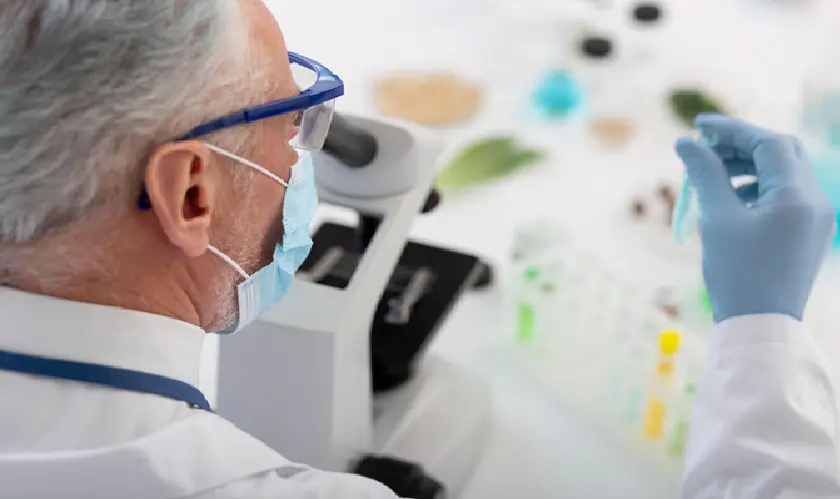Home Industry Healthcare Microplastics in the Human Bod...
Healthcare

CIO Bulletin
03 October, 2025
Microplastics, which are tiny fragments of plastic less than five millimeters in size, are everywhere. From the deepest oceans to the air we breathe, these particles have become a constant presence in modern life. For years, the conversation around microplastics has focused on environmental damage and marine life.
However, as research grows, a more unsettling question emerges around what happens when microplastics make their way into the human body. This article explores what microplastics are, how they enter our bodies, and what effect they have in more detail.
Microplastics originate from two main sources, namely: primary microplastics, which are intentionally manufactured (such as microbeads in cosmetics), and secondary microplastics, which form when larger plastics break down over time.
We are exposed to microplastics in multiple ways, including:
Studies have shown microplastics in seafood, salt, bottled water, and even fresh produce. Evidence suggests that drinking water is a major pathway for ingestion, with both bottled and tap water containing trace levels.
Synthetic fibers shed from clothing and industrial dust contribute to airborne microplastics, which we inhale daily.
Everyday items like toothpaste, exfoliants, and household cleaning supplies may contain or shed microplastics.
This constant exposure raises concern about how deeply these particles are embedding themselves into our biological systems.
Until recently, the idea of plastic inside the body sounded like science fiction. Today, it's a scientific reality. Researchers have detected microplastics in human blood, lungs, placenta, and even stool samples. The implications are still being studied, but the fact that these particles can cross biological barriers suggests they may interfere with vital systems.
For example, microplastics were found in nearly 80% of human blood samples tested during a 2022 study. Another investigation uncovered them in lung tissue, raising concerns about chronic respiratory exposure. The presence of microplastics in the placenta is particularly alarming, suggesting that exposure begins before birth.
While long-term consequences remain unclear, early evidence points toward several health risks, such as:
Microplastics may trigger immune responses similar to other foreign particles in the body. Chronic inflammation is linked to conditions ranging from arthritis to heart disease.
Inhaled microplastics can irritate lung tissue, potentially contributing to asthma and other respiratory conditions.
Ingested particles may disrupt gut microbiota, influencing digestion and nutrient absorption.
Some plastics contain chemicals that act as hormone disruptors, interfering with reproductive health.
Though research is still developing, scientists are exploring possible links between microplastic exposure, cellular damage, and diseases such as cancer.
Researchers studying microplastics and human health emphasize that the risks may vary depending on particle size, chemical composition, and length of exposure. This uncertainty is part of the challenge because while we know microplastics are present, their precise role in human disease is not yet fully understood.
The potential risks extend beyond individual health. If microplastic pollution continues to escalate, the cumulative effects could shape human biology over generations. Constant low-level exposure might alter fertility patterns, weaken immune systems, or create vulnerabilities to chronic diseases.
On a broader scale, microplastics disrupt ecosystems that humans rely on for survival. Contaminated soil may affect crop health, while polluted waterways threaten food security. If left unchecked, the persistence of microplastics could influence not only our health but also our species’ resilience in the face of environmental change.
It’s tempting to see microplastics as an invisible enemy we can’t avoid. Yet experts caution against panic. While the evidence is concerning, many questions remain unanswered. Scientists are still investigating what concentrations of microplastics are harmful, how different particle sizes interact with tissues, and whether certain groups (such as children or pregnant women) face higher risks.
What is clear is that microplastics highlight the interconnectedness of human and environmental health. Reducing plastic pollution is not just about protecting oceans; it’s also about protecting ourselves.
On an individual level, small lifestyle changes can reduce personal exposure and environmental contribution. These can include opting for reusable bottles and bags instead of single-use plastics, choosing natural fibers over synthetic fabrics, and supporting policies that limit plastic production and encourage recycling innovations.
On a societal level, this issue underscores the importance of collective well-being. Just as communities rely on social workers to address human struggles in areas like mental health and family dynamics, we also need global cooperation to confront environmental health threats. For those drawn to making a difference, pursuing an online clinical MSW program is one way to engage in meaningful work that supports individuals navigating complex challenges, including those that arise from environmental change.
Microplastics may not yet be fully understood, but their presence in our bodies and environment cannot be ignored. Whether they turn out to be a hidden threat or an overstated fear, they serve as a reminder that human health is inseparable from the health of our planet. As science continues to unravel the story, one certainty is that reducing our reliance on plastic is an investment in both present and future generations.







